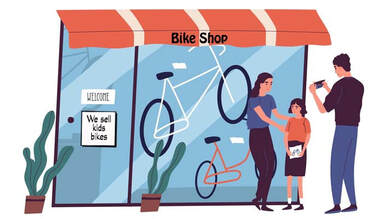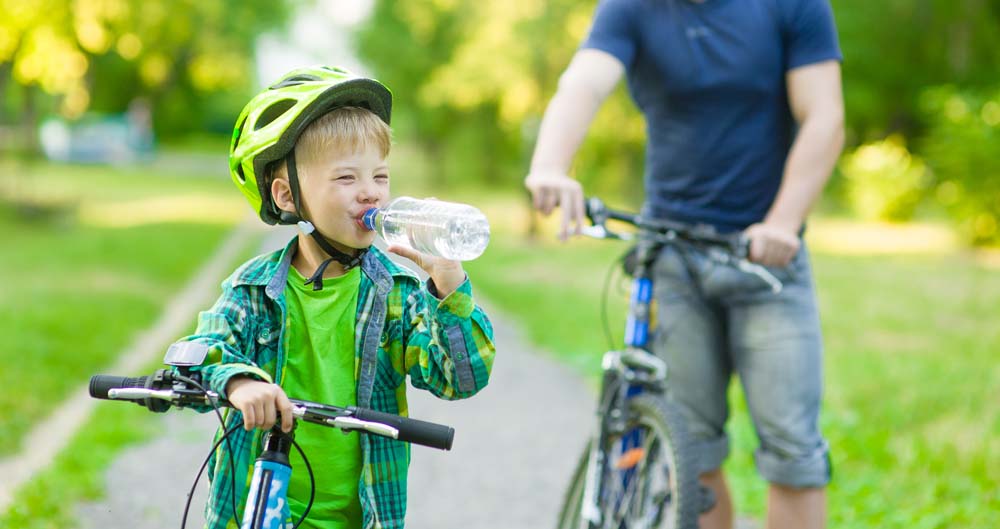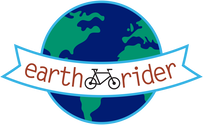 Riding a bike is a great activity for most children. If you are a cyclist yourself you know there are many benefits from riding a bike for yourself and the environment. By making sure a child has a bike that fits, is safe to ride, and they have great places to ride you are getting them started right on a lifetime of fun and memories. We’ve put together some tips to assure the bike you buy for them is a good choice for wherever they are at this phase in their life. Benefits of Riding a Bike for Kids The good things about riding a bike for an adult also apply to kids. While the list can be long, here are a few of the key reasons riding a bike is a good way to get them out of the house in the great outdoors and away from video screens:
How Kid's Bicycles are Sized Unlike adult bikes which are sized on frames expressed in inches, centimeters or a relative measure such as small, medium, or large, kid’s bikes are sized based on the size of the wheels. If you are shopping for a child’s first bike, a size chart is a good place to start because it provides some guidance. If the child is small or large for their age you should size down or size up since a chart is just a starting point. Wheel size: 12 inch; Inseam: 14-20 inch; Age:1-4 years Wheel size: 16 inch; Inseam: 19-22 inch; Age: 3-6 years Wheel size: 18 inch; Inseam: 21-24 inch; Age: 5-8 years Wheel size: 20 inch; Inseam: 23-25 inch: Age: 7-10 years Wheel size: 24 inch: Inseam: 24-28 inch: Age: 9-12 years When the child sits on the saddle which has been set in the lowest position initially, they should be able to touch the ground with their feet and reach the handlebars with their hands. If this does not happen, try a smaller size. If the child is crunched or their knees are hitting the handlebars try a larger size. How to Choose a Bike for a Kid that Lasts Bikes for kids are smaller than adult bikes but one difference in selecting a bike for a short adult versus a kid is that the adult is not going to grow taller while the child is. When shopping for a bike for a kid, you basically want to select the largest bike a kid can ride so they can “grow into it”—to a certain extent, that is. If the bike is too large it will not be safe or comfortable to ride. The worst that can happen is that the child may not want to ride it because it is not fun or they might injure themselves making them afraid to ride and this is not the way we want to introduce them to the joy of cycling. Trying to save money by starting out with a large bike in order to extend the time the child can use it might just backfire. Kids will usually outgrow their bikes in one to two and a half years depending on how fast they grow. If you are concerned about the expense of buying a new bike for a growing child, you might look into purchasing a well maintained used bike for the child. Here are some strategies for what to do with a bike when it becomes too small for the child:
Choosing Between a Tricycle, Balance Bike and Training Wheels For young riders there are three styles of bicycles for starting out and each has advantages and disadvantages. Which option is best depends on personal preference and the child’s physical dexterity. Tricycle – This is a bicycle with three wheels, usually one in the front and two in the back. Having three wheels makes it stable. The advantage of a tricycle is that is instills confidence since it is low to the ground, no balancing required to roll, and no special skills for starting and stopping. The disadvantages are that it is heavy, does not help develop the skill of balance they will need as they move up in size and there is only a little adjustability to resize it as the child grows. Balance Bike – This is a bicycle with two wheels and no pedals. These are designed so the child sits on the saddle with feet touching the ground and they use their feet to scoot and glide forward. Experts say that balance is the hardest thing to learn so this puts learning that skill up front. While there are lightweight bikes designed as balance bikes, you can also take a regular bike in the right size and remove the pedals and have the child scoot on that until they have the balance skill mastered. Then the pedals can be reattached so the child can learn the next skill which is pedaling. The advantage of using a regular kids bike with the pedals temporarily removed is that they can move on to learn pedaling without having to buy a new bike. Training Wheels - Bikes with 12 inch and 16 inch wheels are usually sold with training wheels, or you can purchase training wheels separately to put on almost any bike, including adult bikes. Training wheels are mounted to both sides of the rear bike wheel, essentially making it a tricycle that does not require balance to ride. Training wheels can be adjusted so they are rolling on the ground all the time for maximum support or they can be installed an inch to two off the ground to engage only when the bike starts to tilt to the side if there are balance issues. The advantage of training wheels is that they can provide confidence to a child while they are learning to ride knowing that they will not fall if they have not completely mastered the speed needed to balance. The disadvantage is that they do little to help them learn balance and this makes it difficult to move onto the next skill. Styles of Kid's Bikes
Besides wheel size, there are many different styles of bikes for kids and just like selecting a bike for an adult, the best one depends on the terrain in your city, the type of riding the child will do, and their physical dexterity. The smaller wheel bikes usually come in just the classic sidewalk style with a coaster brake and a single speed. Some small bike come accessorized based on popular favorite cartoons, such as Barbie, Smurf or Transformers. Here are some of the considerations for bikes for older kids:
Although it is fun to surprise a kid by presenting them with a new bike at Christmas or a birthday, It would be ideal for the child to test ride the bike before you buy it. If you do buy before they try it, make sure you are able to return the bike for another size or style if it does not work out. Here is what to look for on their first ride on a new bike:
Introducing a child to cycling can result in fitness, friendships, independence and adventure. It is great to start them early so they can ride throughout their entire life. Once learned, you never forget how to ride a bike. Comments are closed.
|
Earth Rider Blog about CycingAuthorSharon Kaminecki and others comment on adventures in bicycling and other stories Categories
All
Archives
August 2023
|




